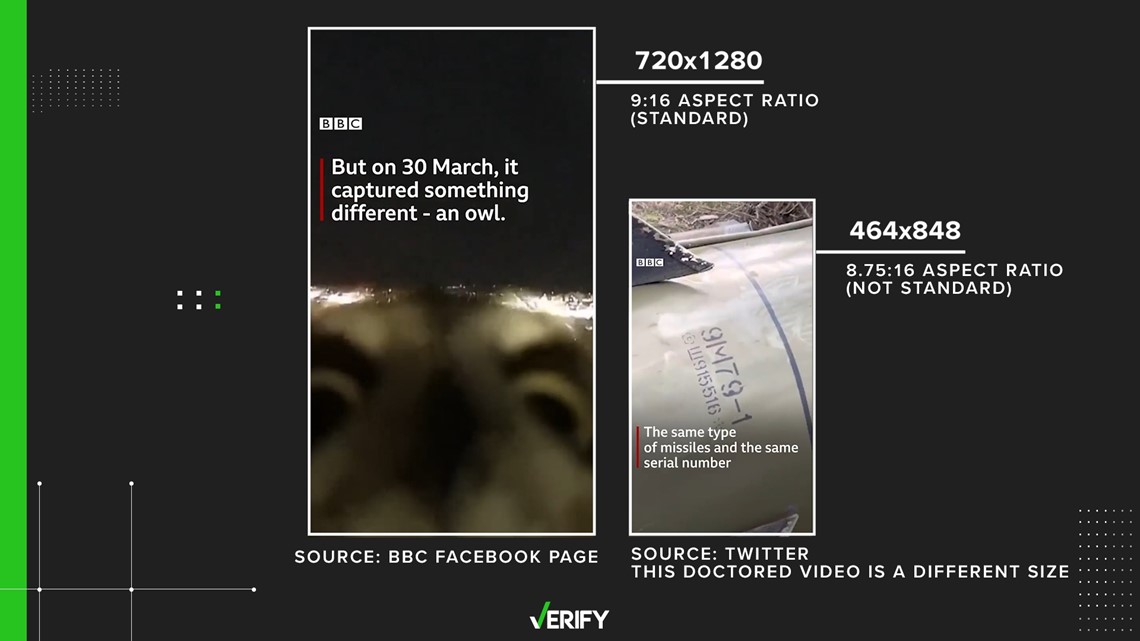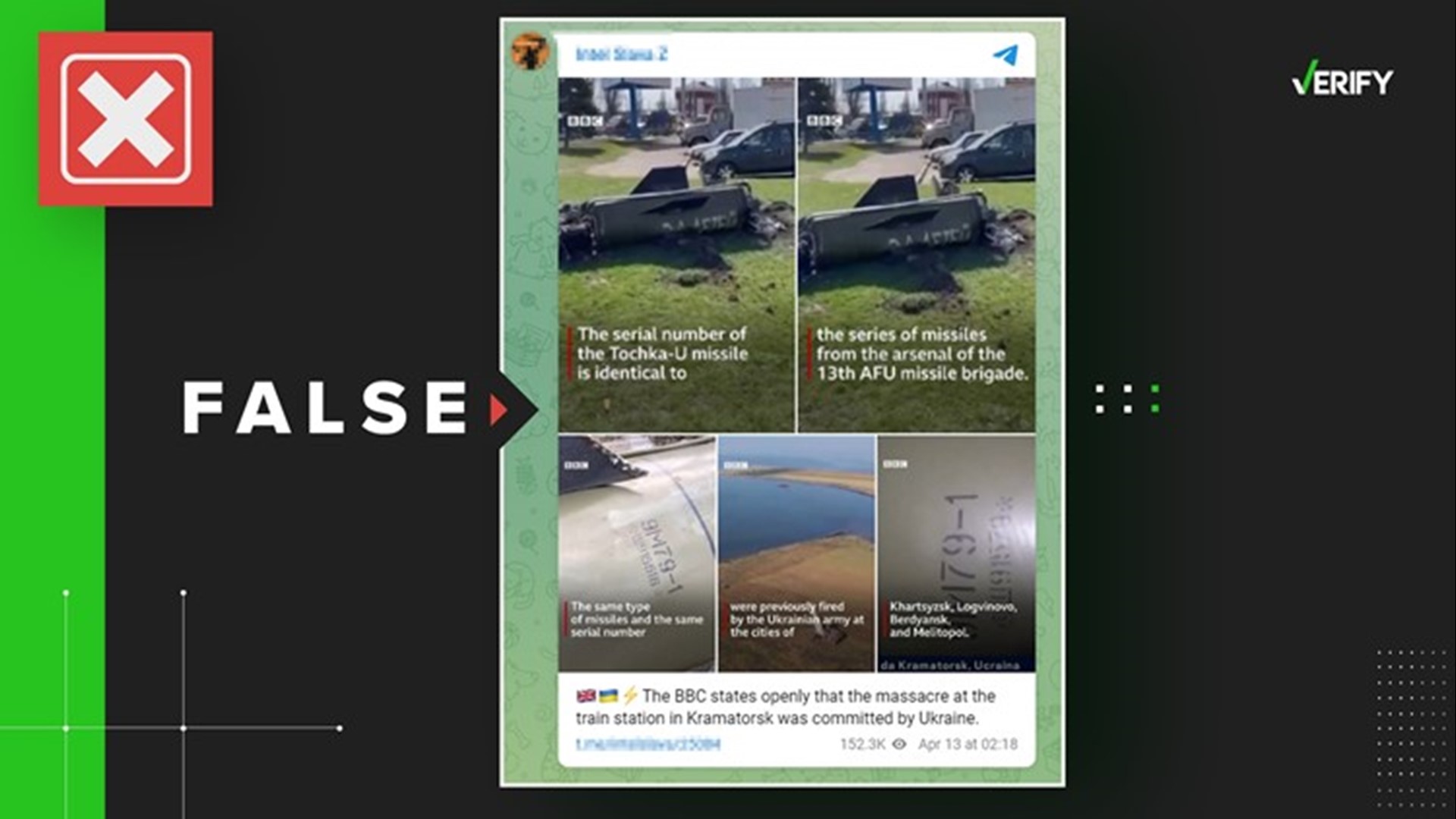Editor’s note: This story contains graphic content.
On April 8, a missile hit a train station in Kramatorsk, a city in eastern Ukraine, killing more than 50 people and wounding dozens more. There were thousands of people near the station, mostly women and children trying to flee Ukraine, when the missile hit.
Since the bombing, Russian media outlets falsely claimed missiles that were recovered near the train station belonged to the Ukrainian armed forces.
Those claims persisted a week later. On April 12, a video that appeared to have BBC News branding circulated across Twitter and pro-Russian channels on messaging app Telegram. The video appears to show BBC News reporting that Ukraine attacked one of its own train stations.
THE QUESTION
Did BBC News air a video claiming Ukraine bombed one of its own train stations?
THE SOURCES
- BBC News
- Joe Inwood, a producer for BBC News
- Analysis of verified BBC News social media channels
THE ANSWER
No, BBC News did not air a video claiming Ukraine bombed one of its own train stations. The viral video is doctored and has since been removed from most social media platforms.
WHAT WE FOUND
The viral video appearing to be from BBC News shows footage from the April 8 attack on the train station in Kramatorsk. The video contains the BBC News logo and branding elements similar to what is used by the news organization on its vertical videos that it posts on Facebook and Twitter.
On April 13, BBC News issued a statement on social media that the video was a fake. The BBC News Press Team said that the video was manipulated to appear as if it came from its news site.
“We are aware of a fake video with BBC News branding suggesting Ukraine was responsible for last week’s missile attack on Kramatorsk train station. The BBC is taking action to have the video removed. We urge people not to share it and to check stories on the BBC News website,” the BBC News press team tweeted.
VERIFY analyzed the Facebook and Twitter accounts for BBC News and did not find this video posted to these accounts. VERIFY also did not find a news report matching the fake video clip on the BBC News website.
BBC News producer Joe Inwood also tweeted that the videos were not from BBC News. In response to a tweet showing the purported BBC News clip, Inwood wrote: “As the BBC producer covering the story, I can confirm the video IS A FAKE. They do appear to have gotten hold of our branding, however, so I’m worried we will see more of these.”
Starting 44 seconds into the clip, the doctored video's English captions read: “Military experts stressed that Ukraine has often started using fake news to promote its position. Earlier, Ukrainian President Zelenskyy complained that he was asked for proof of the Russian army’s involvement in ‘The Bucha Massacre’. The strike on the train station killed 50 people. Ukraine blamed Russia for the attack.”
BBC News spells Ukrainian President Volodymyr Zelensky’s name with only one Y, while the fake BBC News report used two Ys in the last name. The grammar and punctuation is also inconsistent with BBC News reporting from Ukraine.
VERIFY analyzed the fake video and compared it to actual BBC News video reports.
Vertical videos are typically published to meet standard size, just like horizontal videos are produced to fill a widescreen television. This sizing is measured by an aspect ratio, or the ratio of the width to the height of the video. Vertical videos are typically produced with a 9:16 aspect ratio. The doctored video is inconsistent with typical aspect ratio standards used in BBC News vertical videos.


BBC News also uses a template to display text on screen. It features an animated red stripe and white text. In actual BBC News videos, the red stripe animates off the screen entirely when the text changes or disappears. In one instance in the fake video, you can see a red mark at the bottom of the text template that doesn’t animate off with the red stripe text.
So, we can VERIFY the report did not come from BBC News.
The Associated Press contributed to this report.

